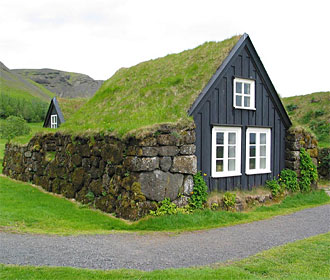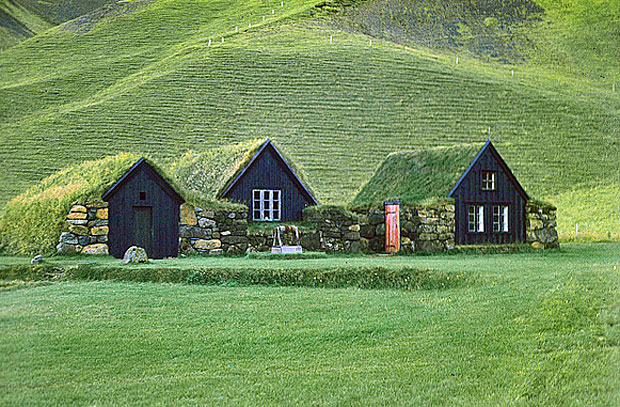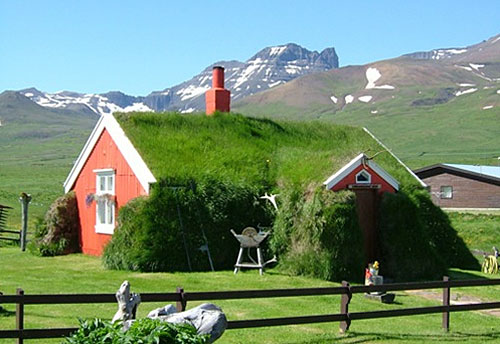Icelandic Turf Houses
Long before environmentally-friendly construction became popular,
people in Iceland were constructing turfhouses. In fact, earth-sheltered
dwellings have been in use since at least the Iron Age. The Romans
built with turf (grass) to create fortresses in the northern parts
of their empire. In Scotland and Ireland, people who were unable
to afford other building materials often built their homes from
earth and sod.
 Icelandic Turf House
Icelandic Turf House |
|
However, in Iceland, it was the building material chosen by
rich and poor alike. Houses, stables, and churches were all built
from earth. Virtually anywhere that people and animals needed
to take shelter from the elements, turf structures were constructed.
They were sturdy and stood up to the harsh climate.
Nordic "long houses" were common in the 9th century.
These were multi-purpose - people both worked and lived in these
buildings. The style evolved to a collection of houses that were
connected by a central passage. There was a sleeping section that
was raised and isolated from the entrance, in the interests of
being able to heat the area effectively. In the 1800s, it became
common practice again to join the houses but keep the roofs separate.
Regardless of the design,
the building materials were the same. The frame
was made of timber, and turf was used for the roofs and walls.
Sometimes slate would be used as a roof underlay, and stones might
be used along with the turf in order to construct the walls.

Iceland Turf Houses
Iceland has never had a large supply of wood for construction,
so mainly the timber came from trade with other areas. Driftwood
was even used. Luxuries like wood paneling were very expensive,
so wood was mainly used by wealthy people. Stone was readily available,
but building with stone was difficult, back-breaking work, and
required a high level of skill.
There was no shortage of
turf. It was found plentifully in the marshlands,
and builders would cut it using different tools depending on the
shape that was needed. The constant supply was a boon to builders,
because turf deteriorated and would have to be replaced. Depending
on how skilled the craftsmen were, the type of turf used, and
the weather conditions, turf could, however, last up to 70 years.
The original timbers would remain in the structure.

Red Turf House in Iceland
The benefits of turf construction are not to be underestimated.
It acts as a natural insulator, so even when it was brutally cold
outside, Icelanders could be assured of comfort in their home.
Also, a well-built turf house kept out drafts. Turf was a much
easier material to work with than stone, and it was available
at no cost. Even today, turf structures exist in Iceland. They
are mainly used as outbuildings for storage.
Conclusion
As a skill, turf building was handed down from one generation
to the next. Today, only a few people still possess the knowledge
needed to construct a turf house. Perhaps, though, as we become
more and more concerned with eco-friendly construction methods,
there will be resurgence in the popularity of turf-building.
|

